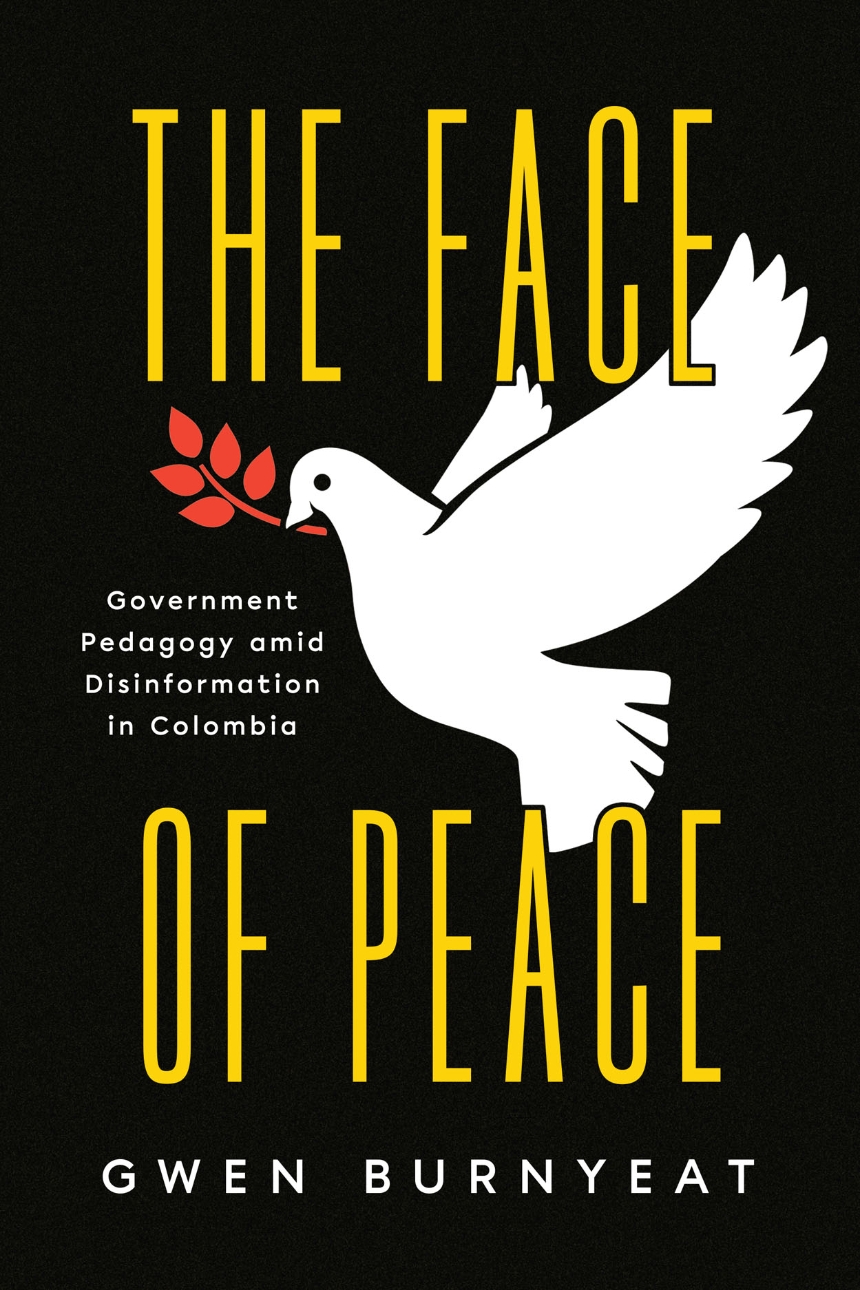The Face of Peace
Government Pedagogy amid Disinformation in Colombia
9780226821627
9780226821603
9780226821610
The Face of Peace
Government Pedagogy amid Disinformation in Colombia
A multi-scale ethnography of government pedagogy in Colombia and its impact on peace.
Colombia’s 2016 peace agreement with the FARC guerrillas sought to end fifty years of war and won President Juan Manuel Santos the Nobel Peace Prize. Yet Colombian society rejected it in a polarizing referendum, amid an emotive disinformation campaign. Gwen Burnyeat joined the Office of the High Commissioner for Peace, the government institution responsible for peace negotiations, to observe and participate in an innovative “peace pedagogy” strategy to explain the agreement to Colombian society. Burnyeat’s multi-scale ethnography reveals the challenges government officials experienced communicating with skeptical audiences and translating the peace process for public opinion. She argues that the fatal flaw in the peace process lay in government-society relations, enmeshed in culturally liberal logics and shaped by the politics of international donors. The Face of Peace offers the Colombian case as a mirror to the global crisis of liberalism, shattering the fantasy of rationality that haunts liberal responses to “post-truth” politics.
Colombia’s 2016 peace agreement with the FARC guerrillas sought to end fifty years of war and won President Juan Manuel Santos the Nobel Peace Prize. Yet Colombian society rejected it in a polarizing referendum, amid an emotive disinformation campaign. Gwen Burnyeat joined the Office of the High Commissioner for Peace, the government institution responsible for peace negotiations, to observe and participate in an innovative “peace pedagogy” strategy to explain the agreement to Colombian society. Burnyeat’s multi-scale ethnography reveals the challenges government officials experienced communicating with skeptical audiences and translating the peace process for public opinion. She argues that the fatal flaw in the peace process lay in government-society relations, enmeshed in culturally liberal logics and shaped by the politics of international donors. The Face of Peace offers the Colombian case as a mirror to the global crisis of liberalism, shattering the fantasy of rationality that haunts liberal responses to “post-truth” politics.
320 pages | 10 halftones, 1 tables | 6 x 9 | © 2022
Anthropology: Cultural and Social Anthropology
Political Science: Political Behavior and Public Opinion
Reviews
Table of Contents
Note on Translation
List of Abbreviations
Prologue
Introduction
Part I Anthrohistory of the Santos Government
1 Peace, Politics, and Public Opinion under Juan Manuel Santos, 2010–2018
2 The Rationality Drive: The Development of Government Peace Pedagogy, 2012–2018
3 The Anti-politics of Cultural Liberalism
Part II Ethnography of Peace Pedagogy in Action
4 Interface: The Enactment of Legitimacy by Explanation
5 State-Consciousness: Three Layers of Responsibility and Trust
6 Rendering Political: The Affective Labor of Liaising with the FARC et al.
7 The Entangled Face: International Implication in Government Responsibility
Conclusion
Acknowledgments
Notes
References
Index
List of Abbreviations
Prologue
Introduction
Part I Anthrohistory of the Santos Government
1 Peace, Politics, and Public Opinion under Juan Manuel Santos, 2010–2018
2 The Rationality Drive: The Development of Government Peace Pedagogy, 2012–2018
3 The Anti-politics of Cultural Liberalism
Part II Ethnography of Peace Pedagogy in Action
4 Interface: The Enactment of Legitimacy by Explanation
5 State-Consciousness: Three Layers of Responsibility and Trust
6 Rendering Political: The Affective Labor of Liaising with the FARC et al.
7 The Entangled Face: International Implication in Government Responsibility
Conclusion
Acknowledgments
Notes
References
Index
